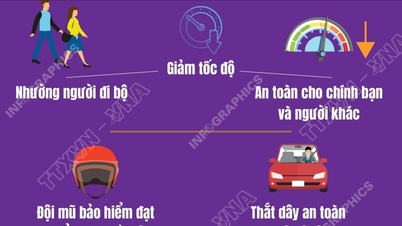In Carwow’s new drag racing video , the facelifted Kia EV6 GT repeatedly beats the Ferrari Purosangue in a straight line. Despite the Purosangue’s slight power-to-weight advantage on paper, the EV6 GT outperforms it in every run, demonstrating the shift in the performance era – where instantaneous torque and traction management make a big difference in electric vehicles.

EV6 GT wins on the straight: results repeat
According to Carwow, in the main races, Kia always took the lead from the start and maintained the gap. Ferrari only won once when host Mat Watson switched the EV6 GT to simulate internal combustion engine power delivery, with fake gearshifts – a setting that does not optimize the acceleration of this electric car.
Dual-motor power and torque advantage
The upgraded Kia EV6 GT uses a two-motor powertrain, 641 horsepower, with temporary turbocharging. Torque reaches 770 Nm (568 lb-ft). With launch control activated, the EV6 GT can accelerate from 0–60 mph in 3.5 seconds; independent testing recorded actual figures a few tenths of a second faster depending on conditions.
Meanwhile, the Ferrari Purosangue is equipped with a naturally aspirated V12 engine, with a capacity of 715 horsepower. Ferrari announced the ability to accelerate from 0-60 mph (96 km/h) in 3.3 seconds. Despite the higher peak power, the Purosangue cannot gain a decisive advantage at the starting stage – where the EV6 GT's instant torque allows acceleration to "build" as soon as the throttle is fully depressed.
Weight and power/weight ratio
In terms of weight, Ferrari claims the Purosangue weighs 4,482 pounds (2,033 kg). However, Car and Driver’s actual measurement is around 4,850 pounds (2,200 kg) – roughly the same as the Kia EV6 GT at 4,884 pounds (2,215 kg). On paper, the Purosangue has a slight advantage in power-to-weight ratio. However, the EV6 GT still has the edge in straight-line acceleration thanks to 60 lb-ft more torque than the Ferrari, according to the source (or about 770 Nm for the Kia), and the ability to distribute torque effectively when starting off.
Why does the EV6 GT break through?
The results in Carwow’s video show two key factors that often decide drag racing: instant torque and how the car delivers power to the road. The EV6 GT makes good use of the early 0–60 mph period, springing forward quickly when the driver engages launch control. At that point, the Purosangue’s high-revving peak power advantage isn’t enough to make up for the Kia’s gap.
Notably, switching the EV6 GT to a combustion-style transmission simulation with a fake gearshift – which enhances the feel – the acceleration time is no longer optimal and the Ferrari wins in one lap. This reinforces the idea that the most powerful, direct configuration of the new electric powertrain is the key to the EV6 GT recreating the gap in the remaining laps.
Price Gap: A Clear Message for the New Era of Performance
The Ferrari Purosangue costs more than $395,000 before options. The Kia EV6 GT starts at $65,275. That makes the Purosangue nearly six times as expensive, but it can’t keep up with the EV6 GT in a straight line on regular runs. This price gap shows the industry’s shift: in the age of electric vehicles, performance no longer correlates with price. Instantaneous torque and precise traction control are allowing “common” cars to challenge and sometimes surpass traditional supercars in acceleration.
Test reality and context
The EV6 GT’s impressive figures (641 hp; 0–60 mph 3.5 seconds) are consistent across multiple runs in the Carwow video. Independent measurements also show real-world times that can be several tenths of a second better depending on conditions, which helps explain why the EV6 GT beats a 715 hp V12 like the Purosangue on the drag strip.
In terms of weight, Ferrari’s published and measured figures (4,482–about 4,850 pounds) put the Purosangue on par with the EV6 GT (4,884 pounds). However, the torque difference and the way each powertrain deploys its power at short notice tilts the score in favor of the Kia for most of the run.
Main specifications table by source
| Category | Kia EV6 GT (upgrade) | Ferrari Purosangue |
|---|---|---|
| Capacity | 641 horsepower | 715 horsepower |
| Torque | 770 Nm (568 lb-ft) | Not stated |
| 0–96 km/h | 3.5 seconds (with launch control); real-world performance could be a few tenths quicker | 3.3 seconds (0–60 mph) |
| Weight | 4,884 pounds (2,215 kg) | 4,482 pounds (2,033 kg; claimed) / approximately 4,850 pounds (2,200 kg; Car and Driver) |
| Reference price | 65,275 USD (~1.65 billion VND) | >395,000 USD (~10 billion VND; before options) |
Conclude
The results from Carwow’s video are typical of the current performance landscape: electric cars like the Kia EV6 GT, despite costing significantly less, can outperform big-engined supercars like the Ferrari Purosangue in straight-line acceleration. The difference comes down to instantaneous torque, power delivery, and the optimal configuration of the electric powertrain at the start. It’s a clear demonstration of the shift over the past decade – where high performance is no longer the preserve of expensive cars.
Source: https://baonghean.vn/kia-ev6-gt-nang-cap-but-toc-vuot-ferrari-purosangue-10311402.html


![[Photo] Prime Minister Pham Minh Chinh meets with representatives of outstanding teachers](https://vphoto.vietnam.vn/thumb/1200x675/vietnam/resource/IMAGE/2025/11/15/1763215934276_dsc-0578-jpg.webp)
![[Photo] General Secretary To Lam receives Vice President of Luxshare-ICT Group (China)](https://vphoto.vietnam.vn/thumb/1200x675/vietnam/resource/IMAGE/2025/11/15/1763211137119_a1-bnd-7809-8939-jpg.webp)

![[Photo] Panorama of the 2025 Community Action Awards Final Round](https://vphoto.vietnam.vn/thumb/1200x675/vietnam/resource/IMAGE/2025/11/15/1763206932975_chi-7868-jpg.webp)

































































































Comment (0)